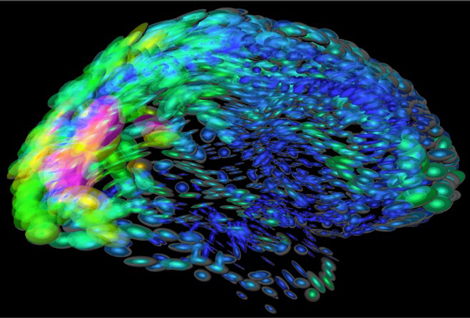Neuroengineering: Illuminating the Brain

The human brain is one of the most fascinating organs in our bodies and also one of the most complex. Engineers are devising remarkable new ways to manipulate our neural circuitry, with applications ranging from controlling prosthetic limbs and giving voice to the paralyzed to treating depression and traumatic brain injuries. Here’s an exciting recent development in the field of neuroengineering:
The Defense Advanced Research Projects Agency has embarked on a $15 million quest to create an implantable device that would be able to replace and heal damaged areas of the brain automatically.
DARPA’s involvement stems from the grim reality that each year, around 1.7 million Americans suffer from traumatic brain injuries – including 10 to 20 percent of soldiers returning from Iraq and Afghanistan.
So now, researchers from across the country are teaming up to work on the project. Among them is Krishna Shenoy, a professor of electrical and biomedical engineering at Stanford University.

Shenoy and his DARPA colleagues aim to treat TBIs using an implant that could deliver light pulses to specific neurons. Using mathematical models of the brain and its neural activity, they are devising ways for the implant to read electrical impulses and then re-route them through damaged areas of the brain. Think of it as the equivalent of building a detour road to circumvent a collapsed bridge. Using light to manipulate neurons is an emerging field, called optogenetics (a more detailed run-down can be found here), which holds a lot of promise for future brain research. Shenoy hopes to produce a working prototype within the next 4 years.
Now that’s using your noggin!
Shenoy’s recent work includes the creation of a brain-computer interface that allows disabled people to type using only their mind:

More nerve hacking here
Second image: National Science Foundation
Filed under: Biomedical, Computer, e-News, Electrical
Tags: Biomedical, Computer, Electrical








